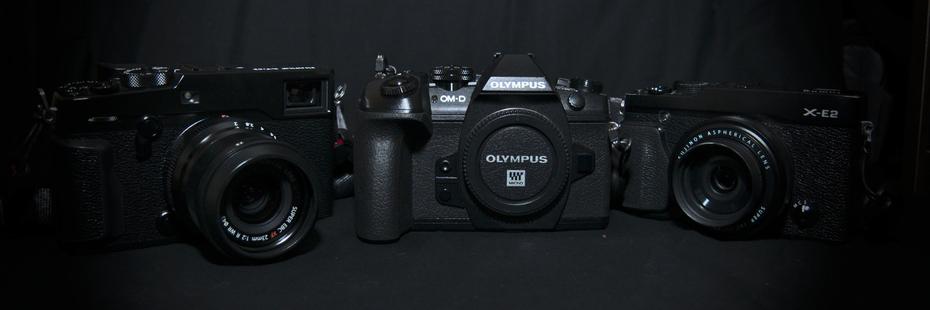
Travel photography: cameras and lenses
While this post is focused on travel photography it could be applied to everyday photography, too.
Choosing a camera ecosystem: lenses and focal lengths
As an enthusiast travel photographer, prior to travel, I agonize over camera and lens selection. A baseline aspect of that struggle is weighing the pros and cons of packing a weather sealed body/lenses versus compactness and overall focal length choices. The selection criteria therein hinges on your own preferred camera brand and ecosystem. The principles outlined in this post are brand agnostic, as they should be, but I’ll be using my own systems as examples.
Currently, I live in two ecosystems: the Fujifilm X-Series and Micro Four-Thirds (Panasonic Lumix and Olympus OM-D). I own two Fujifilm camera bodies (one of which is not weather-sealed) and two Micro Four-Thirds camera (both are weather-sealed) Panasonic Lumix G85 and Olympus OM-D E-M1.2).
Each system has their strengths and are excellent options for travel. My biggest struggle is choosing which system to pack. Image quality wise both are similar – as the gap between a micro four-thirds sensor and APS-C is smaller than that of APS-C and full-frame.
Bodies & lenses
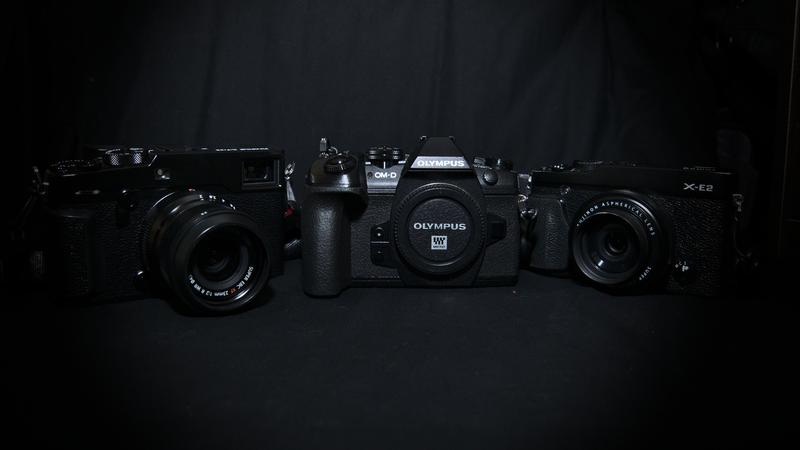
Micro Four-Thirds (MFT / M43) offers a lot: budget-friendly weather-sealed camera bodies coupled with budget-friendly (and some weather-sealed) prime and zoom lenses. What they lack is low light capability (can be decent used at higher ISO but noisier than most people care to see) and to an extent they are weaker in their ability to capture shallower depth of field options. Both weaknesses are inherent to smaller sensors and as a result tough to mitigate. With experience one can get usable shots at 6400 ISO and maybe higher? It depends on what is usable to you.
For the Micro Four-Thirds system I find myself continually referencing this excellent post as a one-stop list showcasing all weather-sealed MFT lenses.
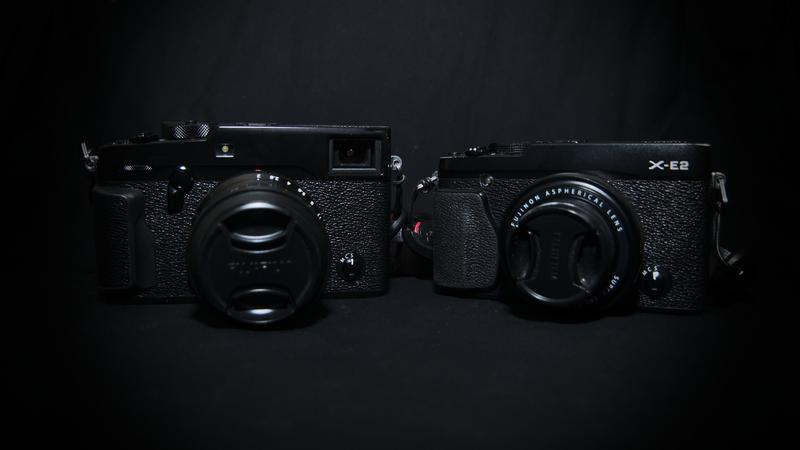
Fujifilm offer excellent lenses and a variety of body sizes & styles. My favorites happen to be the X-H1 and the rangefinder styles X-Pro2 & X-E2. These Fujifilm bodies are light & compact enough for travel and can perform better than MFT when capturing more difficult situations. An APS-C sensor can capture more detail than a MFT sensor.
As a basic rule I tend to use Fujifilm with prime lenses and MFT with zoom lenses (almost exclusively – minus low light which calls for a bright prime).
Camera handling & ergonomics
In MFT land both the Lumix G85 and OM-D E-M1.2 are a joy to use. They are light-weight, rugged (EM1.2 moreso than G85), and provide enough dials and buttons for me to efficiently handle without fumbling around. Both of these bodies have excellent ergonomics – they are my favorite bodies when it comes to how they feel in your hand. In terms of customization: Olympus wins hands-down. While overwhelming, the E-M1.2’s menu system offers possibly more customization than the average person might peruse.
Fujifilm is also a joy to use. The physical dials give you an at-a-glance view of all your camera settings, which be changed with a mostly successful degree of muscle memory. Fujifilm’s strength is in their ability to help you easily see all of your settings when glancing down at your camera. Few of their bodies are as ergonomic as the Lumix G85 or OM-D E-M1.2. The X-H1 is on the larger end of Fujifilm’s APS-C line sharing more in common, size-wise, with the Panasonic Lumix G9 than the G85. I find both the X-Pro2 and X-E2 to handle better with a thumbs up grip mounted in the flash shoe. Without that extra grip the overall handling feels less stable.
Questions to ask yourself when choosing a camera or lens for travel
Where are you traveling? What do you plan on capturing?
Getting a feel for the types of photographic scenes you’re planning to capture will help narrow down your focal length needs. You may pack a different lens or camera setup depending on whether you’re visiting cities-only, a mix of cities and rural areas, or if your focus is rural landscapes/hiking/wildlife. I recommend planning for the unexpected. There have been a few times while on vacation when I’ve found myself without a long telephoto/zoom lens and regretted not packing one. Since then I pretty much always stick to packing the three types of lenses outlined in the “My guidelines when selecting lenses/focal lengths” section below.
Street photography
When I know street photography will be a focus I bring a small camera body (e.g. Fujifilm X-E2 or X100 series) coupled with a pancake lens (Fujifilm 27mm f2.7). On Micro Four-Thirds I currently use a Panasonic Lumix G85 with either the Olympus 17mm 1.8or the Panasonic Lumix 14mm f2.5. Having a small camera body with a dedicated pancake lens ensures you have one camera that can be on you at all times with little-to-no bulk or bother. A big pro to casual travel photography is limiting the amount of lens-swapping. Changing lenses can cause you to miss shots and expose your camera to dust and dirt. The former being my bigger concern.
On a trip, if I were only visiting a city or two it would be tempting to bring only this basic compact body + lens setup. When traveling I often get lost in the paralysis of preparing for the what ifs and what might be necessary. This is good and bad. In these times I need to remind myself that contraints assist creativity. They are necessary and can be a positive. If I didn’t bring a zoom lens, oh well, I’ll need to zoom with my feet. I know, I know, easier said than done, but still it’s a nice idea.
Wildlife & Landscapes
Conversely, if I know that wildlife and landscapes will be a focus I will bring a telephoto prime (Fujifilm XF 90mm F2 R LM W) or a few zoom lenses (MFT: Panasonic Lumix 12mm-60mm f3.5-5.6, Panasonic Lumix 45mm-200mm f4-5.6 or for Fujifilm I’ll reach for the Fujinon XF18-55mmF2.8-4 R LM OIS and the budget-friendly option with surprising image quality Fujinon XC50-230mmF4.5-6.7 OIS). If I travel with my Fujifilm system I typically stick to prime lenses. It’s a personal preference but also one I likely hold due to the weight of Fujifilm’s excellent-but-expensive zoom lenses.
A mix of city and rural
If location expectations are unknown or mixed city/rural (which is likely a lot of trips) I tend to stick to a similar setup. This is also where the “classic” focal lengths of 35mm and 50mm are tremendously helpful. On Fujifilm this might be the Fujinon 23mm f2 / 35mm equivalentor the Fujinon 35mm f2 WR / 50mm equivalent.
Just want to travel light?
You can not go wrong with bringing a 35mm equivalent focal length lens. It may not be wide enough for everything nor telephoto enough for distance shots but it can be ideal for the minimalist. Oh, how I often wish I could be so minimal.
My guidelines when selecting lenses/focal lengths
As mentioned, I adore Fujifilm prime lenses as they are a perfect mix of quality, user experience, and size/weight. The downside when planning a trip is how to go about choosing lenses to pack. My max is three (even for MFT). If the location you’re visiting is typically rainy you may let your weather-sealed lenses take priority over all else. I would recommend build a collection of weather-sealed lenses.

On Micro Four-Thirds, I will typically bring two zoom lenses and one fast & wide prime for low light. The choice in bringing two zoom lenses on MFT is due to their small size and weight.
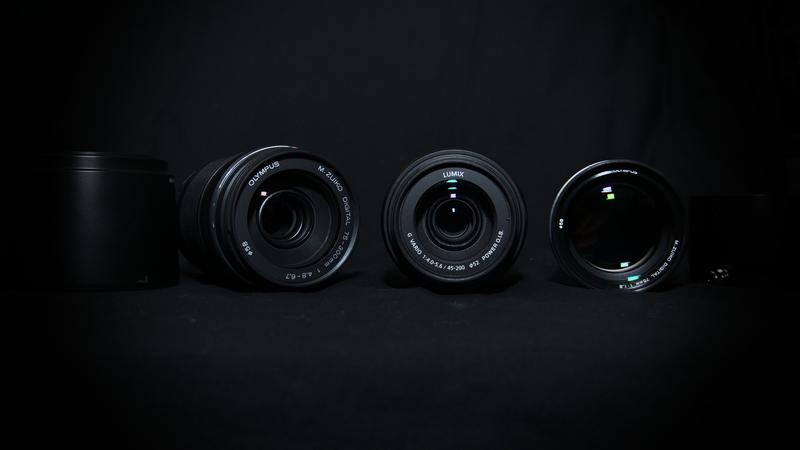
My guidelines are the same regardless of system. Throughout several trips and lots of google research, I have landed at the following 3 pieces of selection criteria.
-
A wide lens for low light captures which can also be used as an all-purpose lens (e.g. Fujifilm 16mm 1.4, Olympus 17mm 1.8).
-
A telephoto or zoom lens for longer range shots. (e.g. Fujifilm 18-55mm f2.8-4, Lumix 12-60mm (either one or Olympus equivalent), or the one lens for all but low-light Olympus 12-100 f4)
-
A classic everyday focal length like a 35mm, 50mm. (e.g. Fujifilm 23mm f2 or f1.4, Fujifilm 35mm f2 or f1.4, Lumix 20mm f1.7, Olympus 17mm f1.8 / or f1.2, or as a budget option look to the Meike 35mm f1.7, Meike 50mm f2 )
Vintage lenses
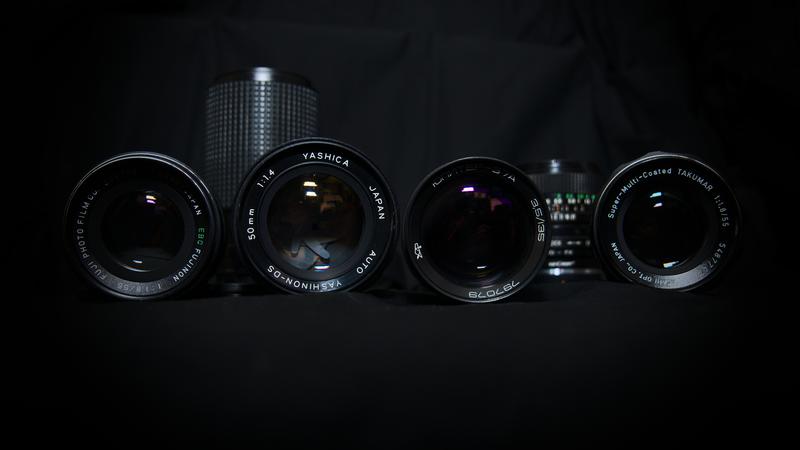
As a wildcard I may substitute the classic or telephoto lens choices with a vintage manual focus lens. I often love bringing a telephoto vintage lens such as the Super-Takumar 135mm F2.5 M42 mount lens or the Jupiter-37A 135MM f3.5. I adore both for their rendering quality and how much forcing yourself to manual focus helps you slow down and focus on composition.
On the classic front I’ll shout out the decent Canon FD 28mm f2.8, the also decent Fujinon EBC 55 f1.8, the solid Yashica Yashinon-DS 50mm 1.4 or SMC Super Auto Takumar 55mm f1.8.
Other items to pack
-
Always remember to pack an air blower such as the Rocket Giotto Blower (small) to blow dust and dirt off your lenses/cameras.
-
Extra batteries, battery chargers, and memory cards.
-
A portable tripod such as the Manfrotto Pixi Evo tabletop tripod or Manfrotto Pixi Mini tabletop tripod. If you like the form factor of the Pixi but want something not so plastic-y I recommend the SIRUI 3T15K tabletop tripod. It’s heavier than the Manfrottos but very stable and durable.
Hopefully this post has helped you in planning which gear you’ll take with you on your next trip.
Happy adventures & captures, friends.